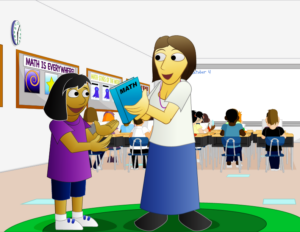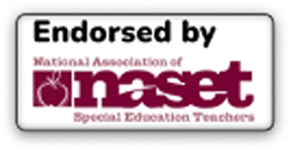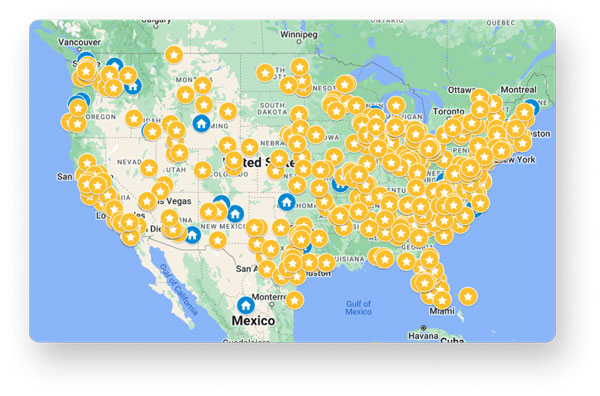An IEP is an essential tool to encourage academic or social success for a special-ed student. In previous blog posts, I have discussed ways to ensure a well-written IEP and a well-facilitated IEP meeting. Mistakes can be made, however, and can be avoided in both constructing the IEP and facilitating the IEP meeting. Here are seven ideas to consider.
1. Including a vague or irrelevant parental input statement
A vague statement
The parental input statement allows parents to express concerns about their child’s academic or social progress. It should include comments about the child’s strengths as well as areas in which they struggle. A good statement about Olivia, a fifth-grader with ADHD and who struggles with math might be, “Parents report that Olivia’s academic strengths are in reading and writing. She has an impressive vocabulary and command of language, and this is clear in her written work, especially when she writes stories. However, she struggles significantly with math, regularly needing extra help with her homework from her parents or older sister. She experiences severe anxiety while attempting to complete her math homework and often ends up crying. In terms of work habits, of particular concern is Olivia’s tendency to forget to bring materials to and from school.”
This statement is effective because it paints a picture of Olivia’s strengths in verbal areas alongside her weaknesses in mathematics as well as her organizational issues. Teachers reading the IEP know that Olivia thrives when writing stories but often finds math unbearable. A poorly-written parental input statement might be, “Parents report that Olivia likes reading but hates math. She is also very disorganized.” Additionally, a common misleading statement found in some IEPs is along the lines of, “Parents have no worries at this time.” Of course they do! Isn’t that implied in agreeing to an IEP assessment for their child?
An irrelevant statement
It is important to get clear, concise, and honest input from the parents. It is also important to note that a statement like, “Parents are concerned that Olivia has nobody to play with at recess” is not appropriate for this section of the IEP. Unfortunately, mistakes like these are incredibly common. Review your IEP. Ask yourself if it is concrete, measurable in some way, and actually helpful in coming up with both goals and strategies.
2. Accommodations and modifications are listed but the staff responsible for implementing these are not specified
An IEP must not only include details about the necessary accommodations and modifications for the student, but it should direct who is responsible for implementing them. For example, if Olivia gets overwhelmed in math class and needs space to calm down, she is allowed to walk around the school for ten minutes with a staff member. But which staff member? Her math teacher? A paraprofessional? A guidance counselor? Children are usually not allowed to walk around school alone, so it is important to specify in the IEP who will accompany Olivia. Unfortunately, IEPs sometimes neglect to specify this type of important information or let a general-education teacher know who to contact.
3. Keeping low-priority IEP goals
All special-ed students have a few behaviors and work habits that they need to address in order to be successful in school. However, some of these students have so many that it is impractical to include all of them as goals in an IEP. Having numerous goals can be overwhelming for a child, so it is important to prioritize the most urgent ones.
Olivia’s most urgent goal is to learn to manage her anxiety in math class. However, she also has executive functioning issues that affect her organizational skills. She often leaves her books in her desk at school, and when Olivia does bring them home she usually forgets to bring them back the next day.
While it is important that Olivia learn these important organizational skills, this concern is dwarfed by her severe anxiety in math. Remembering all of her materials while trying to manage her math anxiety could become overwhelming and ultimately she might not improve in either. Eventually, improving her organizational skills should be an IEP goal, but for the time being it might make more sense to provide an accommodation so that she can focus more on math and managing her anxiety in that class. A good temporary solution could be for Olivia’s teachers to provide extra copies of the textbooks to use in class so she does not have to worry about remembering to take them back and forth each day.

4. The IEP meeting focuses too heavily on the student’s deficits
When conducting an IEP meeting, it is important to talk about a student’s strengths and not just focus on their struggles. It is devastating for parents to hear one negative comment after another about their child, especially when those comments are not accompanied by praise or, in a sense, hope. Remember, the parents have probably worried about their child’s progress for years. What they need to help the child—and in the process, the teaching staff—is hope that, over time, accommodations and strategies can help their child succeed in school and life.
As a general rule, each comment about a student’s struggles should be sandwiched between two positive ones. For example, telling the parents, “Olivia always gets so upset during math class because she doesn’t understand the material right away” sounds dismissive and carries the implication that Olivia is a problem to be solved rather than a human being who needs support. A better way to address these issues would be to say, “Olivia is doing incredibly well in reading class. Let’s see if we can help her transfer some of those skills to math so that she can perform better in class, and let’s help her manage her anxiety. She is a very determined student, and with the right support she will do better.”
5. The IEP meeting that never ends
An IEP meeting is very serious and demands everyone’s full attention and focus; however, they should not be exhausting, and IEP meetings that go on for too long have that effect, especially if you read every single word on an IEP to parents. It is a good idea to try to keep the meeting between 30 to 45 minutes in length.
An exhaustive reading is unnecessary and counterproductive. Summarize the IEP and go over the most important parts in fine detail. It is essential for the IEP to be read and understood, but a monotonous reading may be counterproductive. Vary how the IEP is read and reviewed. Read some parts aloud to emphasize points. At others, summarize and ask parents to look it over and ask questions. Perhaps point out sections that meet parental concerns and others that meet classroom issues that a teacher has raised.
6. Professionals not staying for the entire IEP meeting
It ought to be typical for all professionals at the IEP meeting to stay for the entire meeting. After all, these professionals are a federally-required part of the IEP process, including the IEP meeting. However, it is incredibly common for one teacher after another to come in, give a report, and leave. Sometimes one professional reports that they can only stay for a few minutes, or the administrator leaves unexpectedly. In addition to violating a federal law about student IEPs, this behavior is not conducive to enriching the education of a special-needs student. It is important for all professionals involved in the IEP meeting to be in continual communication with each other.
It is true that some teachers must attend during time that they are scheduled to teach and can only come when coverage is available. In cases like this, the teacher might be able to schedule a brief meeting with the IEP team beforehand to get insight into the general agenda and direction of the meeting. That way, the teacher can prepare notes and organize their comments to be meaningful to parents and useful for the team.
7. Not accommodating adults with “invisible” disabilities
Many “invisible” disabilities– such as autism and ADHD– run in families. If Olivia has ADHD, there is a possibility that at least one of her parents does as well. It is also important to remember that these disabilities don’t magically disappear upon reaching adulthood. Perhaps her mother has ADHD, which sometimes includes sensory processing issues. If Olivia’s mother cannot tolerate fluorescent lights, for example, it is important to accommodate her by holding the meeting in a room that does not have fluorescent lights or where the lights can be turned off and the sun can be an adequate light source. If Olivia’s mother is struggling to deal with sensory overload, it will be difficult for her to be a productive member of an IEP meeting.
Anything the IEP team can do to make the meeting comfortable and meaningful to parents and therefore the student will go a long way to guarantee success. And remember that success means the academic and personal evolution of the student, not just the completion of the document.

An IEP is an essential tool to help students with special needs thrive academically and socially. The IEP document and the IEP meeting both consist of many moving parts that are critical and must be accounted for in order to ensure success.
Resources
- 3 Messy IEP Mistakes Happening Right Now
- IEP Team Disasters: Common Substantive and Procedural Mistakes to Avoid
- IEP Meetings Gone Wrong: 5 Fixable Mistakes
- Autistic at the IEP Table


